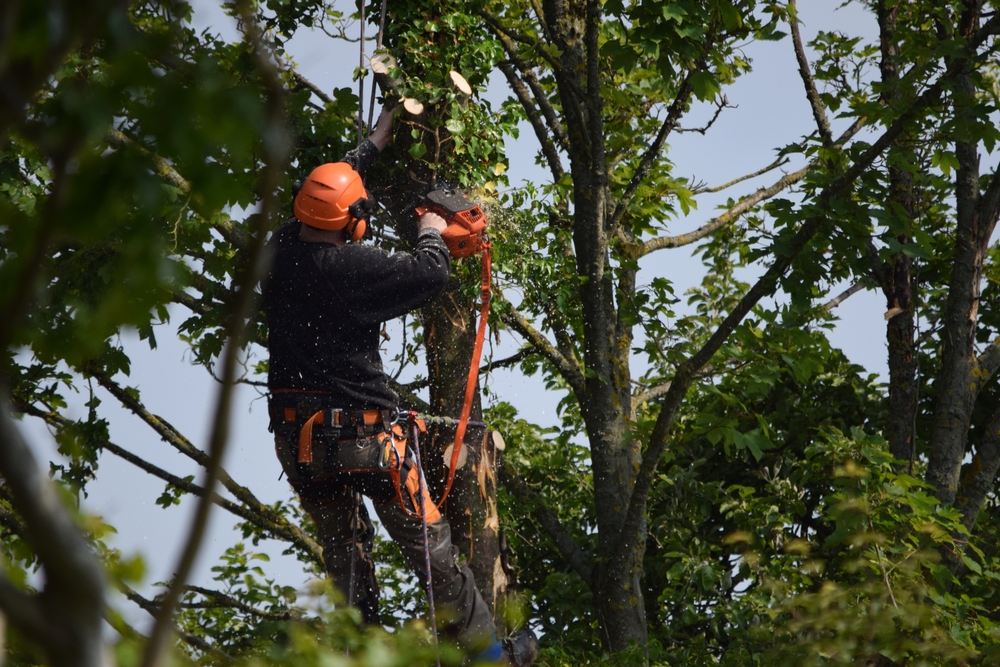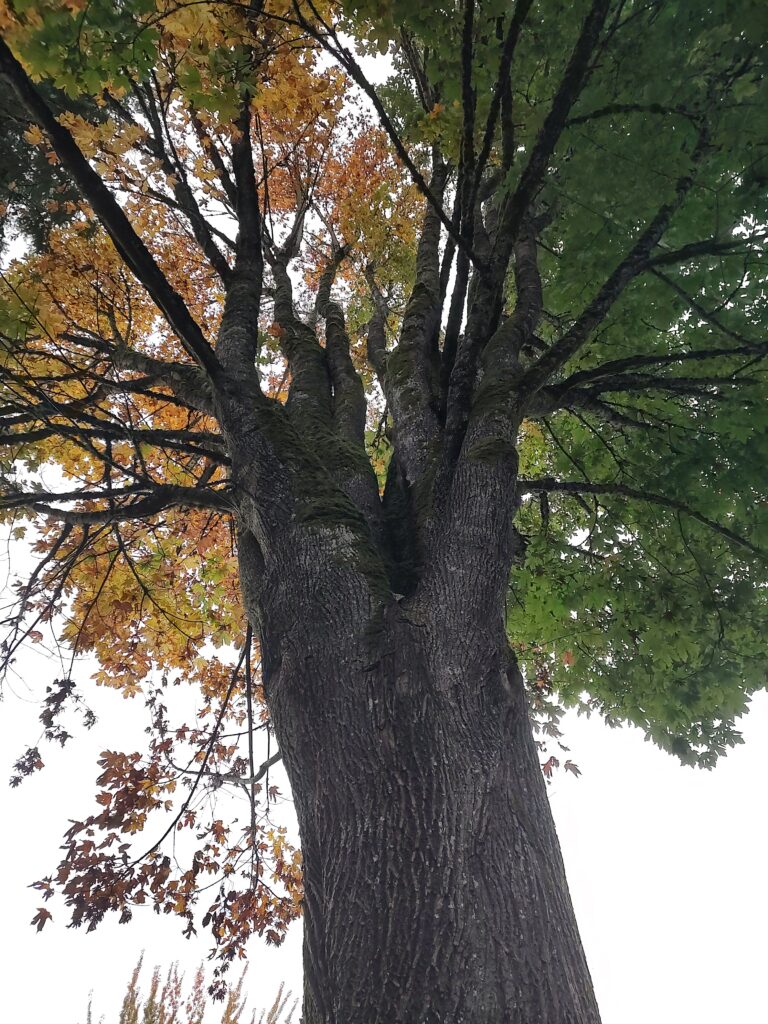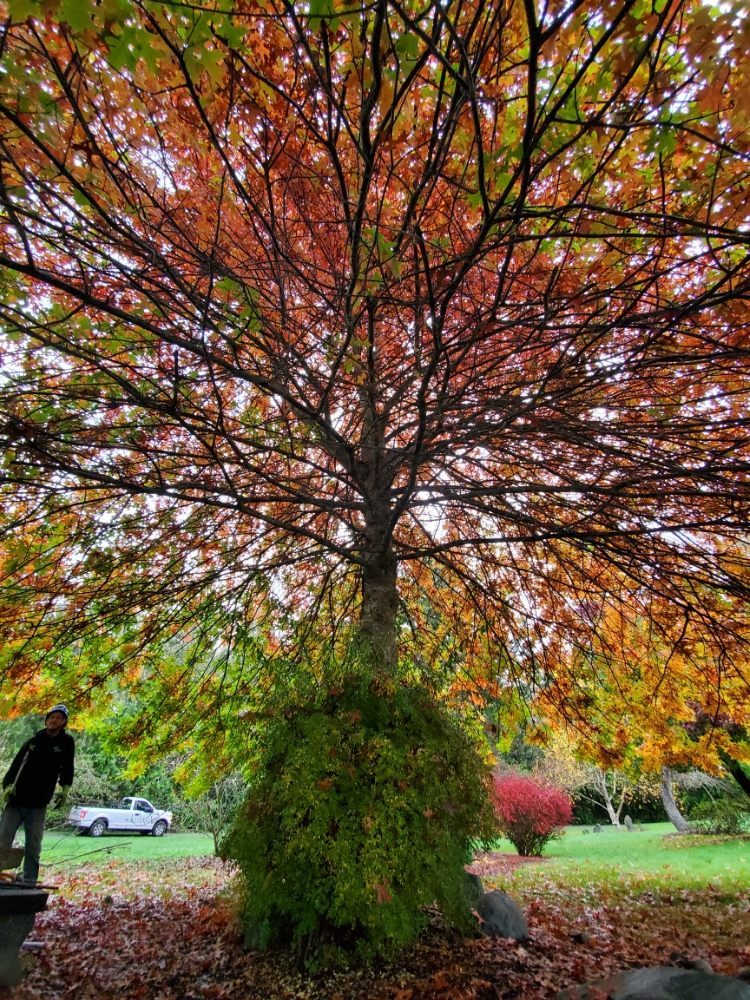Your Complete Guide to Tree Care in the Pacific Northwest
Understanding Professional Tree Care
Tree care is far more than occasional pruning or watering. It represents a holistic approach to evaluating and maintaining your trees’ health throughout their lifecycle. Professional tree care involves the careful observation, analysis, and assessment of each tree’s overall condition, structure, and environment. This comprehensive evaluation allows certified arborists to develop tailored maintenance plans that range from minimal intervention to essential pruning or, when necessary, safe removal of hazardous trees.
The majestic trees of the Puget Sound region define our landscape’s character, from towering Douglas firs to graceful maples. These living giants require dedicated, knowledgeable care to thrive in our unique Pacific Northwest climate. Understanding the seasonal rhythms and specific needs of your trees is essential for maintaining their health, ensuring your property’s safety, and preserving these valuable assets for future generations.
Essential Tree Care Procedures
Professional tree care encompasses various specialized techniques, each designed to address specific needs and promote optimal tree health. Understanding these procedures helps homeowners make informed decisions about their landscape maintenance.
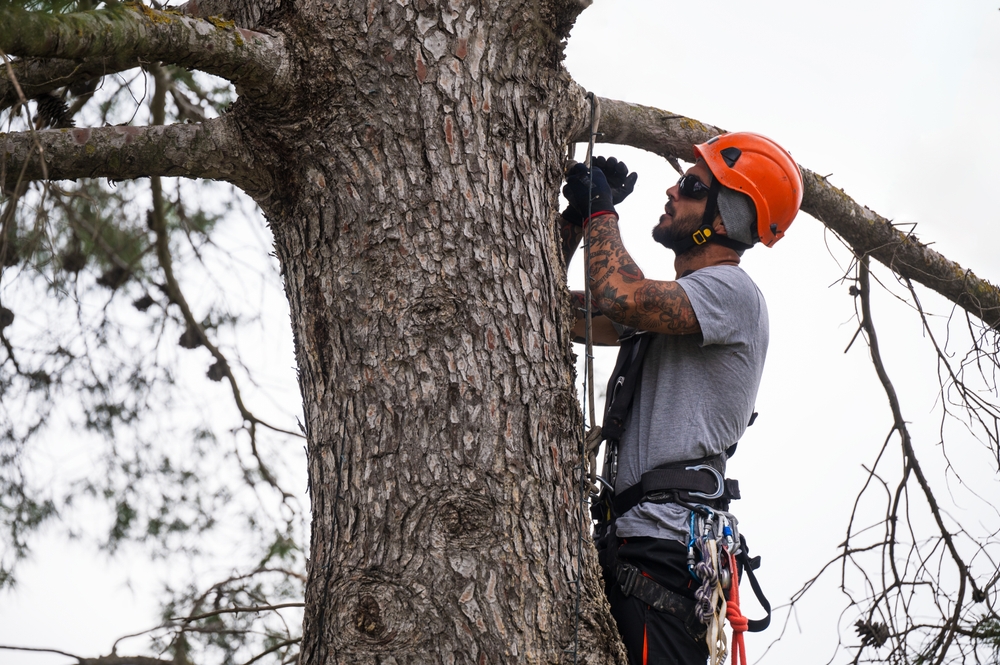
Tree Pruning Techniques
- Crown Cleaning involves the selective removal of deadwood from a tree’s crown. This essential maintenance procedure eliminates potential hazards while improving the tree’s appearance and health. Dead branches not only pose safety risks during storms but can also harbor diseases and pests that may spread to healthy tissue.
- Crown Reduction represents a sophisticated pruning technique that reduces a canopy’s overall size through strategic cuts that maintain the tree’s natural form. Unlike the harmful practice of topping, which indiscriminately removes large portions of the crown, proper crown reduction preserves the tree’s structural integrity while achieving size management goals. Each cut is carefully planned based on previous pruning history and the tree’s growth patterns.
- Elevation Pruning removes the lowest branches to provide clearance for pedestrian or vehicle traffic, protect structures, or improve sight lines. This technique requires careful consideration of the tree’s overall balance and the proportion of live crown that remains after pruning.
- Thinning creates better light penetration and air circulation by selectively removing interior branches. This technique, also known as wind-sailing, reduces wind resistance during storms, decreasing stress on the tree’s root system and reducing the likelihood of catastrophic failure during severe weather events common to our region.
- Structural Shaping focuses primarily on younger trees and ornamental shrubs, guiding their growth to achieve desired aesthetic forms while maintaining health. This preventive approach establishes strong branch structure early, reducing future maintenance needs and potential hazards.
- Structure Clearance addresses conflicts between trees and buildings, power lines, or roadways. When live branches must be removed for clearance, arborists follow the critical guideline of removing no more than 30% of a tree’s live crown ratio to maintain its vitality and structural stability.
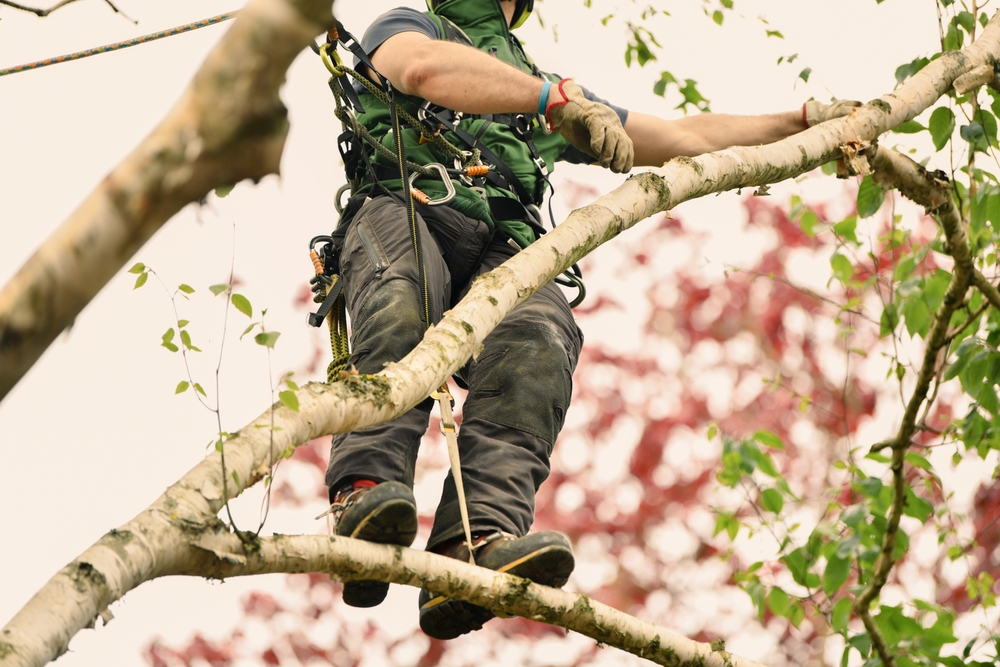
Spring and Summer: The Growing Season
As Pacific Northwest winters give way to spring, your trees enter their most active growth phase. This seasonal transition presents unique opportunities and challenges for tree care.
Spring’s emergence of new foliage provides the perfect opportunity to assess your trees’ structural integrity. Winter storms often leave hidden damage that becomes apparent only as trees leaf out. Professional arborists recommend early spring evaluations to identify and address winter damage before it compromises tree health or creates safety hazards. Light structural pruning during this period guides healthy growth patterns, preventing future conflicts with structures or utilities.
The transition into summer brings different considerations. While our region’s reputation for abundant rainfall holds true for much of the year, summer often delivers unexpected dry spells that stress trees, particularly young or recently transplanted specimens. These trees haven’t yet developed the extensive root systems necessary to access deep soil moisture, making supplemental watering crucial for their survival and establishment.
Summer’s warmth accelerates pest and disease activity. Regular monitoring becomes essential as conditions favor rapid proliferation of common Pacific Northwest tree problems like aphids, spider mites, and various fungal diseases. Early detection and intervention can prevent minor issues from becoming major problems requiring extensive treatment or tree removal. Watch for telltale signs: unusual leaf discoloration, premature leaf drop, visible insects, or fungal growth on bark or leaves.
Autumn: Critical Storm Preparation
Autumn in Snohomish and King Counties delivers spectacular beauty alongside serious tree care responsibilities. This season represents your most important opportunity for proactive maintenance before winter’s storms test every tree on your property.
As deciduous trees shed their leaves, their complete branch architecture becomes visible, revealing structural issues hidden during the growing season. This visibility makes autumn ideal for comprehensive safety inspections and strategic pruning. Professional arborists can identify subtle signs of decay, weak branch attachments, and other potential failure points that untrained eyes might miss.
Strategic Autumn Preparations
Proper canopy thinning stands as one of the most effective storm preparation techniques. By selectively removing specific branches, arborists reduce wind resistance without compromising the tree’s structural integrity or aesthetic appeal. This scientific approach differs dramatically from harmful topping practices, maintaining the tree’s natural defense mechanisms while improving its ability to withstand high winds.
Deadwood removal takes priority during autumn preparation. Dead branches become projectiles during storms, threatening property and personal safety. Their removal represents a simple yet critical investment in winter storm preparedness. Similarly, identifying and removing hazardous limbs with weak attachments or internal decay prevents predictable failures that could damage your home, vehicles, or injure family members.
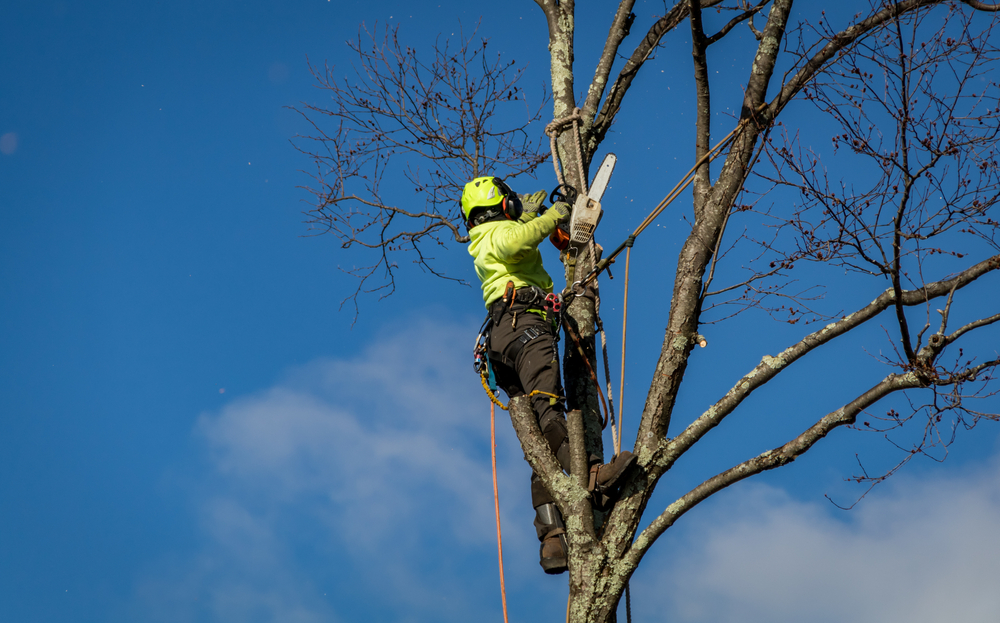
Winter: Dormancy and Vigilance
Winter dormancy doesn’t mean trees require no attention. This season offers unique maintenance opportunities while demanding heightened awareness of weather-related risks.
Dormant pruning, performed on deciduous trees during winter, stimulates vigorous spring growth while allowing arborists clear visibility of the entire branch structure. This timing minimizes stress on trees and reduces disease transmission risks, as many pathogens are inactive during cold weather. The exposed framework reveals the tree’s true structure, enabling precise cuts that improve long-term health and form.
Pacific Northwest winters test trees through multiple stressors. Ice storms and heavy, wet snow accumulate on branches, adding tremendous weight that can exceed their load-bearing capacity. Evergreens face particular risk as they retain their foliage year-round, providing more surface area for snow and ice accumulation.
Constant winter rainfall saturates soil, potentially compromising root stability. This condition, combined with strong winds, increases uprooting risks, especially for trees with compromised root systems or those planted in poorly draining soils. Regular monitoring for new leaning, particularly after storms, helps identify trees requiring immediate professional attention.
Comprehensive Maintenance Planning
Successful tree care extends beyond reactive problem-solving to embrace proactive, strategic planning. Professional arborists develop customized maintenance plans considering each tree’s species, age, condition, and location. Most mature trees benefit from professional pruning every two to three years, though young trees may require more frequent attention to establish strong structure.
Integrated Pest Management
While some contractors rely heavily on chemical treatments, responsible tree care emphasizes Integrated Pest Management (IPM) practices that minimize environmental impact. This approach prioritizes cultural and biological controls over pesticides, recognizing that healthy trees naturally resist most pest and disease problems. When intervention becomes necessary, organic alternatives like horticultural oils and soaps often provide effective solutions without harmful environmental consequences.
The philosophy of allowing nature to run its course guides sustainable tree care. Trees possess remarkable abilities to defend themselves against pests and diseases when properly maintained and not stressed by poor growing conditions. Chemical interventions should remain reserved for severe infestations or diseases that threaten tree survival or pose risks to surrounding vegetation.
Professional Assessment and Support
Building and implementing a comprehensive tree care plan can feel overwhelming for property owners. The complexity of evaluating tree health, understanding species-specific needs, and recognizing potential hazards requires expertise developed through years of training and experience.
ISA Certified Arborists bring scientific knowledge and practical experience to tree care challenges. Their assessments identify subtle problems before they become expensive emergencies, providing peace of mind that your property’s trees receive appropriate, timely care. Professional evaluations become particularly valuable before storm season, after severe weather events, or when planning landscape changes that might impact existing trees.
Investing in Your Property's Future
Proactive, year-round tree care represents more than aesthetic maintenance; it’s an essential investment in property value, safety, and environmental stewardship. Well-maintained trees increase property values, reduce energy costs through strategic shading, improve air quality, and provide habitat for local wildlife. Conversely, neglected trees become liabilities, threatening structures, increasing insurance costs, and requiring expensive emergency removals.
By aligning maintenance efforts with seasonal rhythms, you promote vigorous growth during active seasons, prepare for predictable weather challenges, and minimize storm damage risks. This approach protects your investment while contributing to the urban forest that makes the Pacific Northwest such a desirable place to live.
Your Partner in Tree Health
Whether you need a professional safety assessment before storm season, have questions about specific trees on your property, or want to develop a comprehensive maintenance plan, expert help is available. Our team of ISA Certified Arborists understands the unique challenges Pacific Northwest trees face and provides science-based solutions tailored to your property’s needs. Contact us today to schedule a free on-site consultation and ensure your trees remain healthy, safe, and beautiful throughout every season. Together, we can protect and preserve the magnificent trees that make your property and our region so special.
Ready to Partner with a Proven Expert?
Your property is one of your greatest investments. Trust it to the team that has protected homes and businesses across Snohomish and King Counties for over 30 years.
